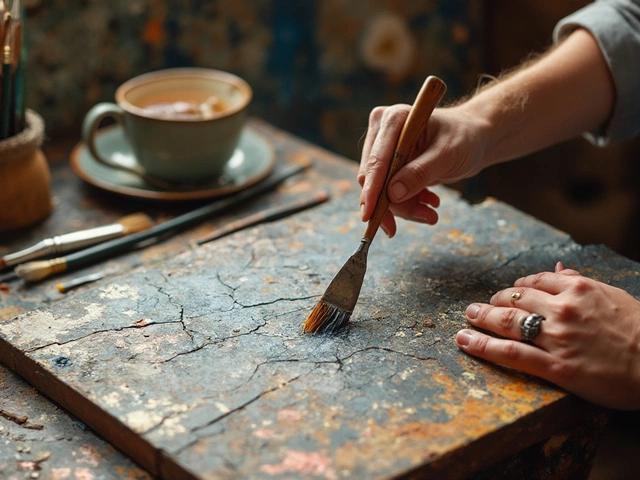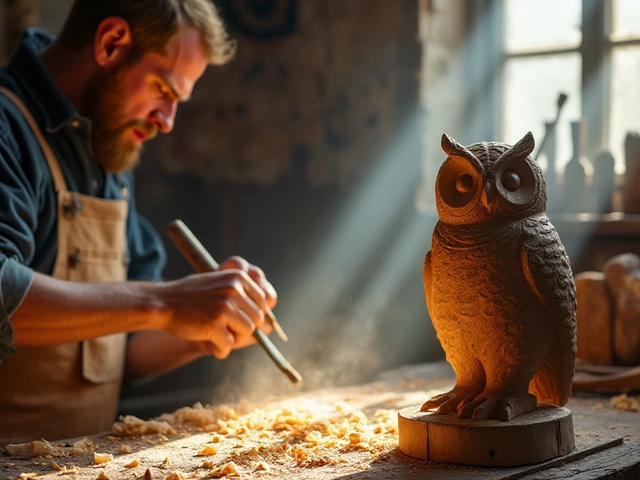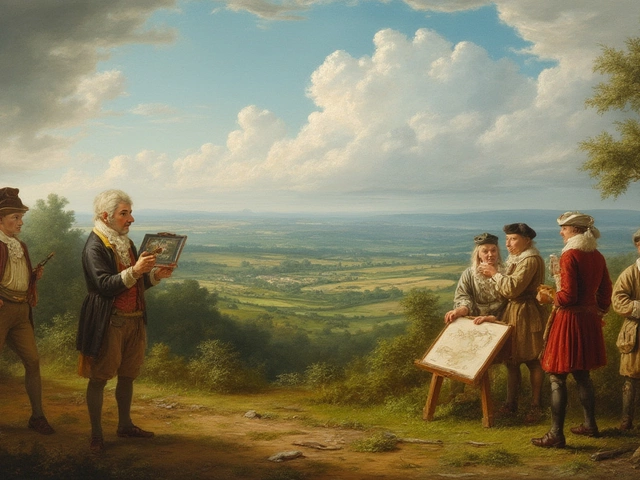Carving: Shaping Material into Art
When working with carving, the process of removing material to reveal form, whether in wood, stone, or other media. Also known as subtracting sculpture, it sits at the heart of Sculpture, the three‑dimensional art of shaping or assembling material. Two of the most popular branches are Wood carving, the tradition of turning timber into decorative or functional objects using knives and chisels and Stone carving, the ancient craft of chiseling rock to create statues, reliefs, and architectural details. Both rely heavily on the right Chisel, a hand‑held tool with a shaped cutting edge used to shave away material and a steady hand. Carving encompasses a range of techniques—from deep relief that pops off a panel to fine detailing that mimics fabric folds. Artists often start with a sketch or model, then transfer the design onto the material and begin the subtractive process. This method demands a clear vision because every cut is permanent. That permanence also creates a unique link to history: medieval woodcarvers, Renaissance stone masters, and contemporary artists all share the same fundamental workflow, even if the tools have evolved. Because carving is a hands‑on discipline, it pushes artists to develop tactile skills alongside visual thinking. Learning to judge depth, angle, and grain early on can speed up progress in related fields like sculpture or furniture making. Carving also influences museum exhibitions; curators regularly highlight carved works to demonstrate craftsmanship and cultural narratives. In turn, galleries that showcase carved pieces often attract collectors looking for pieces that blend tradition with modern expression. So whether you’re a beginner eyeing a simple bird on a wooden block or an experienced sculptor planning a life‑size stone figure, understanding the core elements of carving gives you a solid foundation for every step ahead.
Why Carving Still Matters in Modern Art
Today’s art scene isn’t just about digital pixels; many creators return to carving to add texture, weight, and authenticity to their work. Contemporary Sculpture projects often blend digital modeling with hand‑carved elements, creating hybrid pieces that feel both futuristic and grounded. Artists use carving to explore themes like sustainability—choosing reclaimed wood or locally sourced stone makes the process environmentally conscious. Workshops across Pembrokeshire, for example, teach community members the basics of wood carving, turning a hobby into a cultural touchstone. Carving also shapes education. Art schools incorporate carving modules to teach students about material properties, tool safety, and the discipline of planning before cutting. Those lessons echo in other media: a painter who understands how light interacts with carved surfaces can translate that knowledge into more realistic shading on canvas. Likewise, a digital artist who learns traditional carving techniques can better simulate texture in 3D models. Finally, the market still values carved works. Collectors often view a hand‑carved object as a testament to an artist’s skill and patience. Auction results for carved stone statues and intricate wood reliefs regularly outperform purely decorative items, proving that there’s real demand for the craft. This demand fuels a cycle where galleries seek fresh carving talent, artists refine their methods, and audiences discover new pieces that blend heritage with innovation.
Below you’ll find a curated selection of articles that dive deeper into specific aspects of carving and related art forms. From step‑by‑step guides on using chisels to discussions about how carved works fit into modern exhibitions, the posts will give you practical tips, inspiring stories, and fresh perspectives to help you sharpen your craft and appreciate the broader world of carved art.
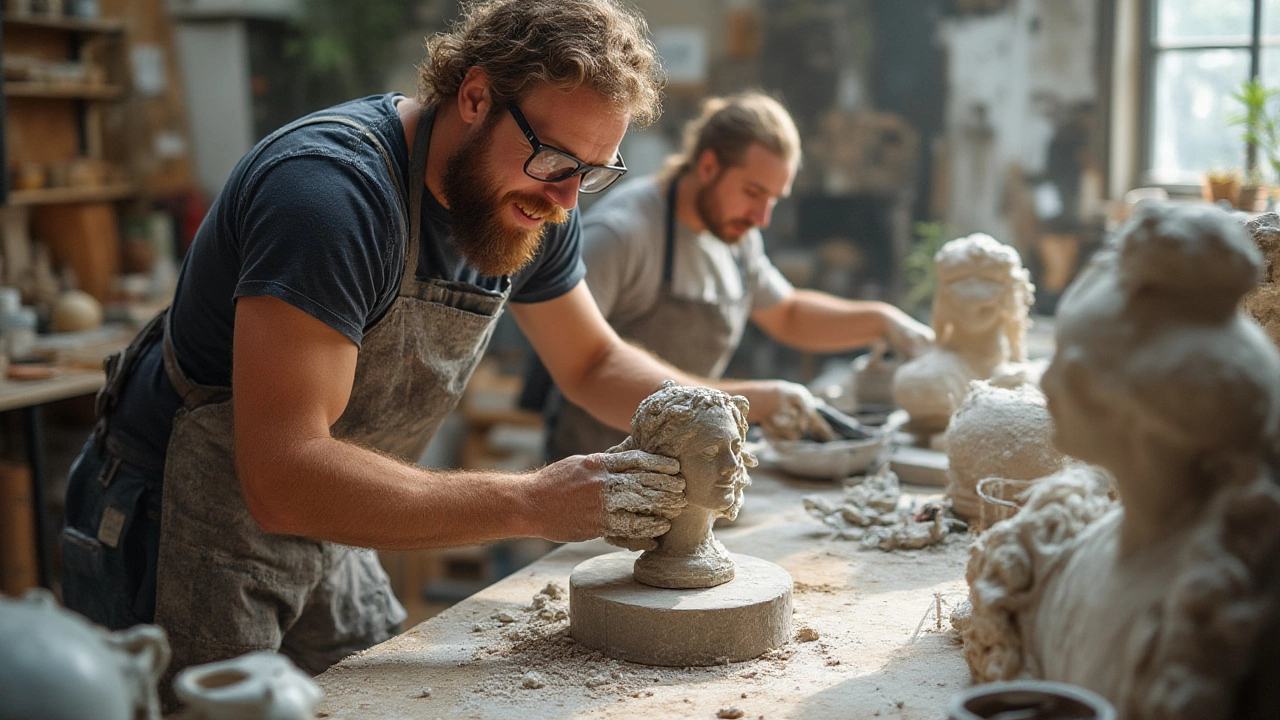
Discover the four basic sculpture techniques: carving, modeling, casting, and assembling. Learn practical tips, real examples, and how artists bring materials to life.
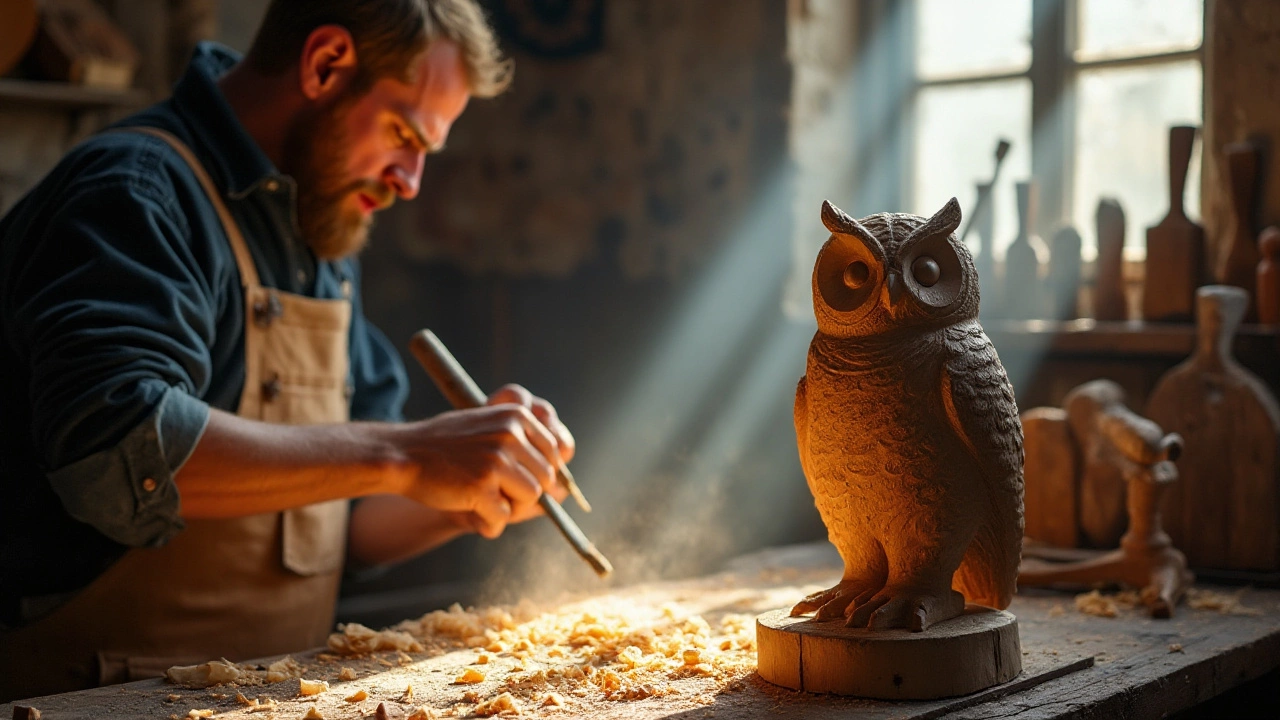
Delving into the world of sculpture art, this article unravels the distinctions between sculpting and carving. These artistic processes differ primarily in technique and materials used, impacting the art produced significantly. While carving is a method of subtraction, typically using materials like wood and stone, sculpting often involves a range of materials, including clay, and encompasses both additive and subtractive techniques. Understanding these differences provides insight into the creative processes and the diverse artistry involved in sculpture.

